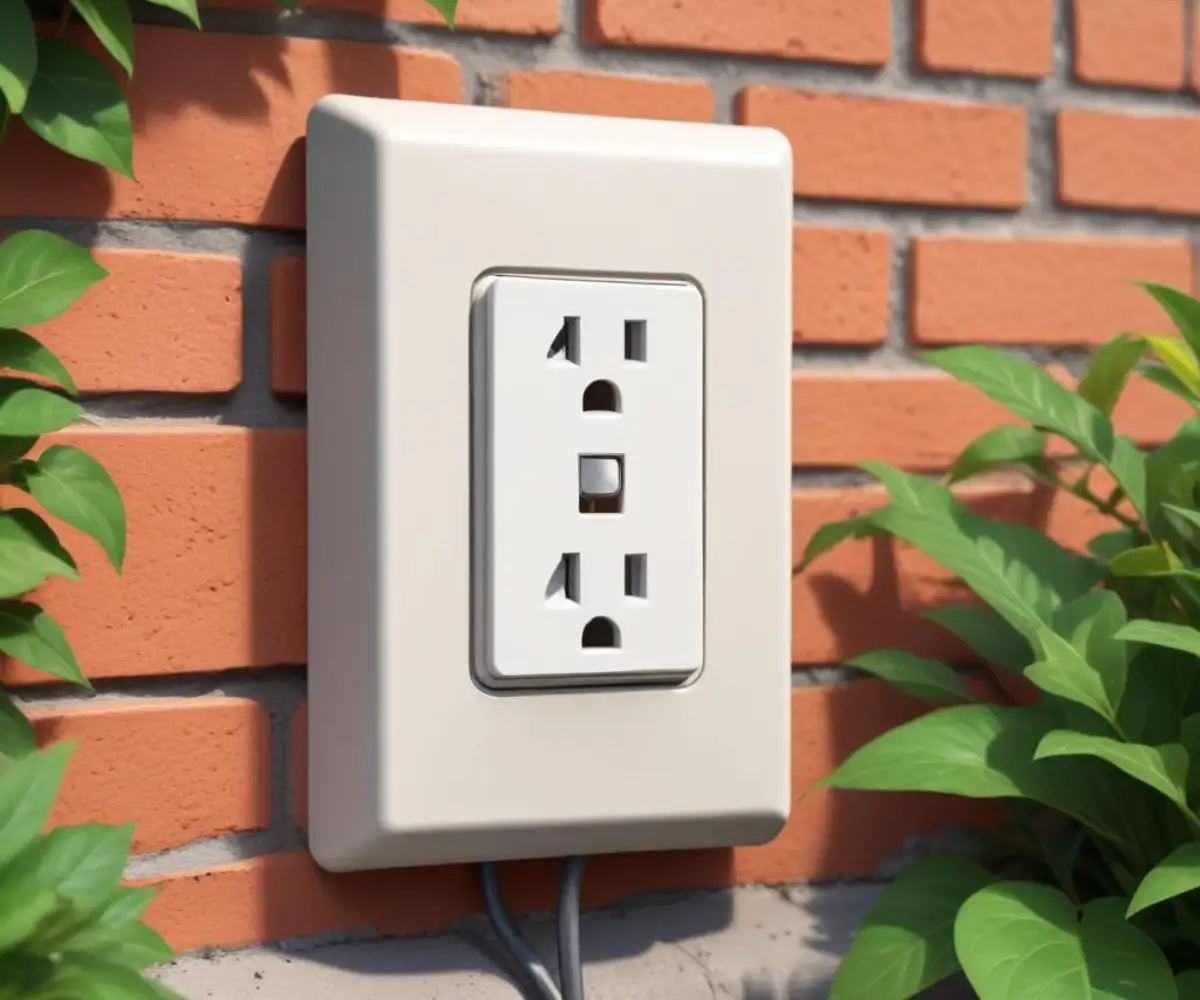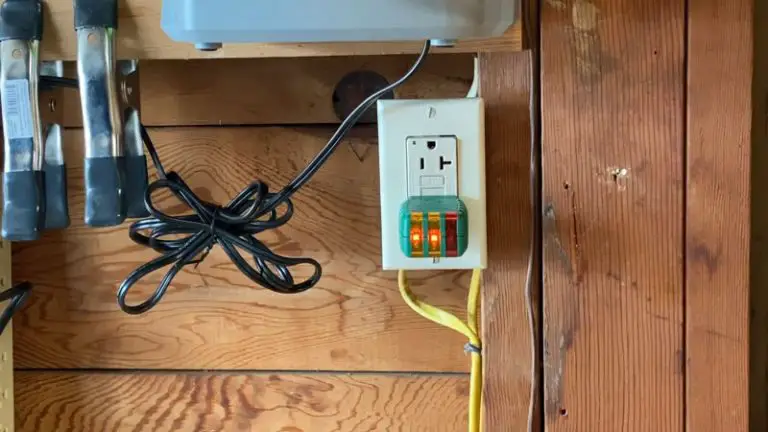No Outdoor Outlet? Genius Solutions to Power Your Yard Now
The modern backyard is an extension of the home, a place for work, relaxation, and entertainment. Yet, this outdoor oasis often has one critical limitation: a frustrating lack of electrical outlets.
Without power, you can’t hang festive string lights, run a laptop for an afternoon of work in the sun, or use essential yard tools. This guide provides a comprehensive breakdown of solutions, from temporary fixes to permanent, professional installations.
You'll Learn About
Understanding the Dangers: Why You Can’t Just Use an Indoor Extension Cord
Before exploring solutions, it’s vital to address a common and dangerous mistake. Grabbing any orange extension cord from the garage and running it out a window is a significant safety hazard.
Indoor extension cords are not designed to withstand moisture, UV rays, or temperature fluctuations. Using them outdoors can lead to cord degradation, electric shock, and even fire.
The GFCI Imperative: Your Outdoor Safety Net
Anytime you’re using electricity in a potentially damp location, you need Ground Fault Circuit Interrupter (GFCI) protection. A GFCI outlet monitors the electrical current and instantly cuts power if it detects a ground fault, which can happen if a device gets wet.
This single feature is what makes outdoor power use safe. All reputable permanent and many high-quality temporary solutions will have GFCI protection built-in.
Immediate & Temporary Power: The Renter-Friendly Fixes
If you need power for an afternoon project or are in a rental where permanent modifications are not allowed, these temporary solutions are your best option. They are fast, require no installation, and are relatively inexpensive.
The Heavy-Duty Outdoor-Rated Extension Cord
A proper outdoor extension cord is a must-have for any homeowner. These cords are specifically designed with durable insulation to resist sunlight, moisture, and abrasion. When selecting one, pay close attention to its gauge (AWG).
A lower gauge number means a thicker wire, which can safely carry more power over longer distances without overheating. For most power tools and appliances, a 12-gauge cord is a safe and reliable choice.
Portable Power Stations: Your Personal Electrical Grid
A portable power station is essentially a large, rechargeable battery equipped with standard AC outlets, USB ports, and other connections. These devices have become a game-changer for those needing power away from a wall socket.
They are silent, emission-free, and completely self-contained. You can use them to run lights, speakers, projectors for an outdoor movie night, or even recharge your cordless tool batteries.
Battery-Powered Everything: The Ultimate Cord-Cutting Solution
Perhaps the simplest solution is to eliminate the need for an outlet altogether. Today’s battery technology is more powerful and reliable than ever, with a vast range of cordless tools and devices available.
From lawnmowers and leaf blowers to string lights and speakers, going cordless offers unmatched freedom and convenience. Committing to a single brand can be highly beneficial, as it allows you to share batteries across dozens of tools. If you’re considering this path, exploring the best power tool ecosystem is a crucial first step to ensure all your devices can share the same power source.
Clever DIY & Semi-Permanent Solutions
For those who own their homes and are comfortable with basic electrical work, these semi-permanent solutions offer a more integrated approach without the cost of hiring an electrician for a major installation.
Tap into an Existing Outdoor Light Fixture
Many homes have an outdoor floodlight or porch light, which means there is already an electrical box and wiring run to the exterior of your house. With the right hardware, this existing power source can be adapted.
Specialized adapters are available that screw into a light socket and provide an outlet, while still allowing the use of a bulb. For a more robust solution, you can replace the entire fixture with a combination floodlight and outlet model. This is an elegant way to convert a flood light to an outlet and unlock that hidden power source.
The Discreet Window & Door Pass-Through
Sometimes the nearest outlet is just inside a door or window. The challenge is getting the power outside without creating a security risk or damaging the cord and weather-stripping. The solution is a flat plug extension cord or a dedicated window pass-through adapter.
These ultra-thin cables are designed to be run through a closed window or door frame with minimal impact. This provides a quick and surprisingly effective way to power a patio or balcony without any drilling.
Harnessing the Sun: Solar-Powered Outlets
Solar technology has made significant strides. While a small solar panel won’t power a circular saw, it’s more than capable of handling low-draw applications. Solar-powered outlet systems consist of a panel, a battery to store the energy, and an inverter with outlets.
These are ideal for running decorative lighting, charging phones and tablets, or powering a small water feature in a garden. They offer a completely off-grid solution that is both environmentally friendly and requires no connection to your home’s wiring.
The Permanent Solution: Installing a Dedicated Outdoor Outlet
For the ultimate in convenience, safety, and reliability, nothing beats having a professionally installed, dedicated outdoor outlet. This is the best long-term solution for homeowners who frequently use power tools, electric grills, or extensive holiday lighting.
A permanent installation is the only solution that truly adds value and functionality to your property. It eliminates the hassle and potential hazards of temporary cords.

Why a Weatherproof GFCI Outlet is Non-Negotiable
Building codes universally require that all outdoor receptacles be GFCI-protected. Furthermore, they must be housed in a weatherproof electrical box with a protective cover.
These “in-use” covers are designed to keep rain, snow, and dirt out, even when a cord is plugged in. This robust protection is essential for a permanent installation that will be exposed to the elements year-round.
The Installation Process: A Job for an Electrician
While some experienced DIYers may tackle this, installing a new circuit is a job best left to a licensed electrician. An electrician will ensure the job is done safely and up to code, protecting both your family and your home.
The process typically involves identifying the best indoor circuit to tap into, drilling through the exterior wall, and running electrical cable in a conduit to the new outlet location. They will install the weatherproof box, the GFCI outlet, and ensure everything is properly grounded and sealed against moisture.
Comparison: Which Outdoor Power Solution Is Right for You?
Choosing the best option depends on your budget, needs, and whether you rent or own your home. This table breaks down the pros and cons of each solution to help you decide.
| Solution | Best For | Estimated Cost | Difficulty | Key Consideration |
|---|---|---|---|---|
| Outdoor Extension Cord | Short-term, temporary tasks | $25 – $100 | Very Easy | Must not be used as a permanent solution. |
| Portable Power Station | Renters, camping, powering electronics | $200 – $1500+ | Very Easy | Capacity (Wh) determines runtime. |
| Battery-Powered Devices | Yard work, convenience, maximum portability | Varies by tool | Easy | Committing to one battery platform is best. |
| Light Fixture Conversion | Homeowners needing power near an existing light | $15 – $70 | Moderate (Requires electrical confidence) | Circuit must not be overloaded. |
| Solar-Powered Outlet | Low-power uses (lights, charging) in sunny areas | $50 – $300 | Easy | Limited power output; dependent on weather. |
| Professional Installation | Homeowners wanting a permanent, safe solution | $250 – $500+ | Professional Only | The safest and most reliable long-term option. |
Advanced Safety Considerations You Cannot Ignore
Successfully getting power outdoors is only half the battle. Doing so safely is what truly matters. Keep these advanced considerations in mind.
Weather-Resistant vs. Weatherproof
The terms are often used interchangeably, but they mean different things. A “Weather-Resistant” (WR) outlet is built with corrosion-resistant materials to withstand damp environments. “Weatherproof” refers to the enclosure or cover that protects the outlet from rain and snow.
For maximum safety, you need a WR-rated GFCI outlet inside a weatherproof in-use cover. This ensures protection from both internal corrosion and external weather.
Protecting Cord Connections from Moisture
When you have to connect two extension cords or a cord to a device, the connection point is highly vulnerable to moisture. A simple and effective solution is a weatherproof cord connector box.
This is a small plastic clamshell-style enclosure that snaps shut around the connection point, creating a highly water-resistant seal. It’s a small investment that provides crucial protection.
Powering Your Outdoors Safely and Effectively
The absence of an outdoor outlet no longer needs to limit the potential of your yard, patio, or balcony. From simple, temporary solutions like a heavy-duty extension cord to the modern convenience of a portable power station, you have options.
For homeowners, investing in a professionally installed permanent outlet is a safe and valuable upgrade. By choosing the right solution for your needs and always prioritizing safety, you can unlock the full potential of your outdoor living space.

